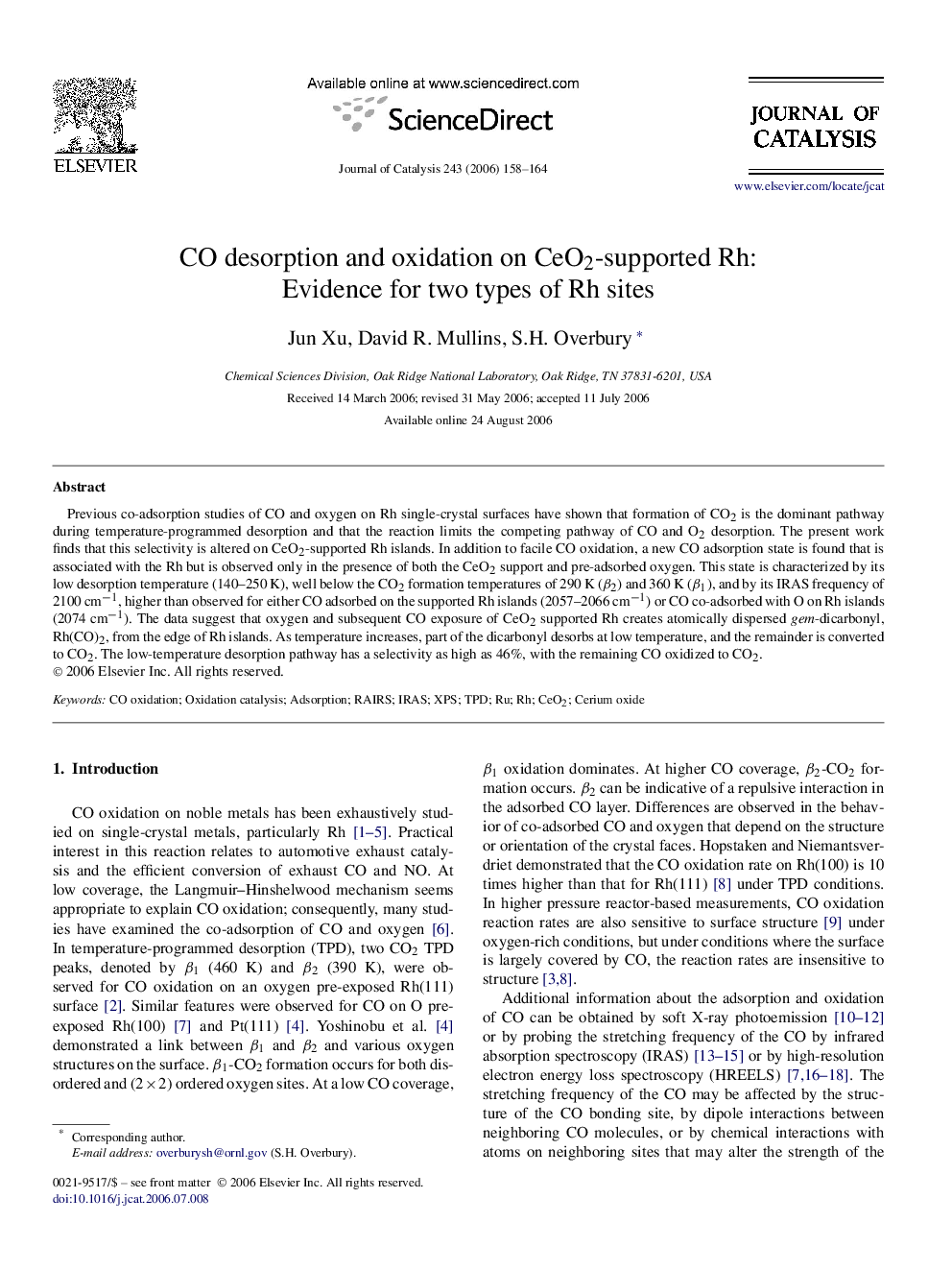| Article ID | Journal | Published Year | Pages | File Type |
|---|---|---|---|---|
| 63447 | Journal of Catalysis | 2006 | 7 Pages |
Previous co-adsorption studies of CO and oxygen on Rh single-crystal surfaces have shown that formation of CO2 is the dominant pathway during temperature-programmed desorption and that the reaction limits the competing pathway of CO and O2 desorption. The present work finds that this selectivity is altered on CeO2-supported Rh islands. In addition to facile CO oxidation, a new CO adsorption state is found that is associated with the Rh but is observed only in the presence of both the CeO2 support and pre-adsorbed oxygen. This state is characterized by its low desorption temperature (140–250 K), well below the CO2 formation temperatures of 290 K (β2β2) and 360 K (β1β1), and by its IRAS frequency of 2100 cm−1, higher than observed for either CO adsorbed on the supported Rh islands (2057–2066 cm−1) or CO co-adsorbed with O on Rh islands (2074 cm−1). The data suggest that oxygen and subsequent CO exposure of CeO2 supported Rh creates atomically dispersed gem-dicarbonyl, Rh(CO)2, from the edge of Rh islands. As temperature increases, part of the dicarbonyl desorbs at low temperature, and the remainder is converted to CO2. The low-temperature desorption pathway has a selectivity as high as 46%, with the remaining CO oxidized to CO2.
